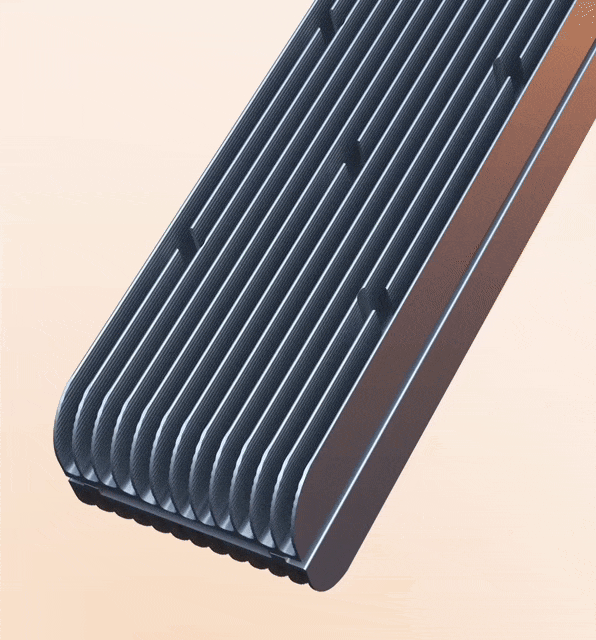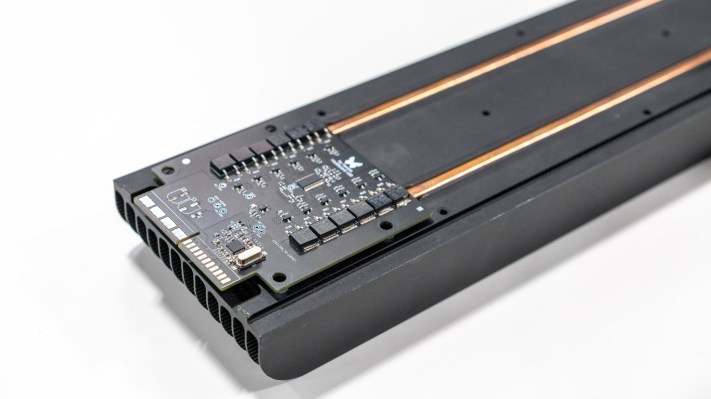It’s not news that crypto mining takes a lot of energy. Bitcoin alone is estimated to consume 127 terawatt-hours a year. If Bitcoin was a country, it would slot in roughly as the 32nd biggest consumer of electricity in the world. A lot of this energy is output as heat, which needs to be cooled back down in data centers. So wouldn’t it be great if you could do something with all of this excess heat? That’s the basic concept behind Hestiia, which takes a miner, puts it on a radiator on your wall and uses the excess heat from mining for coins to heat your house.
The company’s unique home heater uses recycled data center chips to generate heat, making it a smart, eco-friendly solution for modern homes.
“Three-quarters of heating is still based on fossil fuel heating. And around the world, governments are banning fossil fuel heating and pushing for electric heating. Heat pumps are perceived as the only real option. But the problem is they’re expensive. They’re hard to install. And they’re noisy, and they’re actually not very pretty to look at also. And so, what we did is we replaced the traditional heater with a computer,” explains Antoine Cossart, CEO and founder at Hestiia, speaking to TechCrunch at CES 2024.
The system aims to match the variable energy supply from renewable sources with demand. The intelligent system can preheat the home before the homeowner arrives, turn off when an energy-consuming appliance like an oven is used and then return to operation after the appliance is turned off. The basic idea is that it ensures homes stay at a comfortable temperature in the home but also helps stabilize the grid.
Hestiia’s heaters are powered by recycled ASIC chips, harvested from data centers upgrading to newer models. These chips are given a new lease of life on a custom-made board, producing heat that is then transferred to the home. The use of conductive layers and heat pipes ensures efficient heat transfer, making the most of the emanated warmth.

One of the radiators inside the heater. Image Credits: Hestiia
The front panel of the heater is made from a material based on recycled resin and plastics. The dual-core heating system provides both convection and radiant heating, and the system is controlled via an app, which enables the user to set the desired temperature. As the temperature increases, more chips are used to provide the necessary heat.
Hestiia’s innovative heating system also has the potential for distributed data processing. This means the heaters could also process data for services like SETI or blockchain applications, turning the heaters into distributed computational centers.
With data centers consuming vast amounts of electricity and producing heat that is often wasted, Hestiia’s approach offers a sustainable solution.
“Next, as AI continues to grow and consumes more electricity and data centers and pumps up more and more heat into the atmosphere, we want to be able to offer distributed AI compute power as well,” Cossart says. “We’d rather reuse the waste heat and do something smart with it as opposed to consider it waste.”
The company is in beta testing phase, with a handful of products already out for testing. Hestiia plans to start shipping next month and has already presold 230 units, intending to sell 1,000-2,000 units this year, largely in France.

Hestiia’s heaters look pretty cool. Image Credits: Hestiia.
I’ve always thought that blockchains are a lot of hot air, to be honest with you, and it seems like a pretty logical end stage of the technology to see it being taken into use to produce literal hot air — but at least this time it’s being used for something useful. Even if blockchains end up falling in popularity, the heaters will remain relevant for a while: There seems to be a never-ending need for computation power.
The biggest challenge I see with this company is that, while it makes sense right now, computation power continues its rapid acceleration. Heater pumps in homes have a life expectancy of 15-20 years, and it’s hard to imagine that Hestiia’s heaters deployed today will be able to contribute meaningfully to computation-heavy tasks 15 years from now. Case in point: Can you think of a single computer from 2009 that’s still in use and contributing in any meaningful way to today’s AI computational needs?
Still, it’s pretty exciting to see startups thinking differently about the intersection of computation and climate change.
The startup is in the process of raising a bridge round of about €1 million, following a previous raise of €5 million a few years ago.

